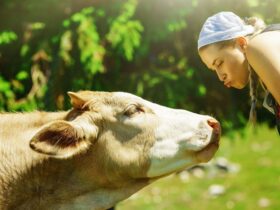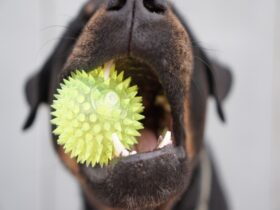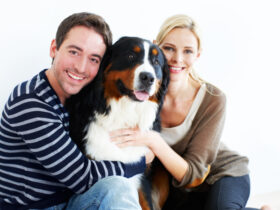It is an exciting time when you bring a new puppy home for the first time. Maybe you have been to visit the new member of your family with his mother and siblings a few times while you wait for the right time to bring him home forever. The anticipation will have been building during this time and you may be getting ready to welcome your fur baby. You are likely to have been buying all the necessary equipment, but it is important to take some steps to help the pup settle in.
Remember, your puppy may feel scared and upset for a while in your home. This is not because it doesn’t love you but just that it is somewhere unfamiliar. It is no longer in the safety of the place it has known for its whole life, and it has been separated from its mother and siblings. These feelings of loneliness and fear will not last long, and you can do things to help it settle in and feel less afraid.
Take Your Time
Your puppy needs to learn to trust you. This will take some time as it gets used to how things are done in your home. The dog will need to get used to new smells, a new place to sleep, and new people. Its natural curiosity means it will spend a lot of time exploring, and do not be surprised to find that it pees and poops in a variety of places. Try not to overwhelm the new puppy in the first few days and allow it to get used to its new surroundings.
Provide a Safe Place
Dogs like to have their own safe place to go when they need some time away from the noise and hustle of a busy household. This is especially true if you have young children who are prone to making a lot of noise. A dog crate is a good idea as it gives your puppy a place to chill. You can train the puppy to spend time in the crate happily by offering small treats as rewards whenever it goes into it. If you need to keep your puppy safe while you get in the shower, for example, you can close the door without worrying that it will become too upset.
Start Training Early
It is important to train the dog as early as possible. The good news is that most dogs like to please and will be eager to do what you want. Teach your pup where it can and cannot go in the house by using baby gates or closing doors to off-limit rooms. Do not give the puppy old socks or old shoes to play with because it will not be able to differentiate old from new and will learn that playing with any shoes is permitted. Only allow it to play with dog toys such as rope toys and chews. This is the best way to stop the dog from trying to play with things you would rather keep intact.
Your vet will likely recommend that you keep the puppy indoors until it has had its vaccinations. This is usually around twelve weeks. It can be difficult to keep the dog occupied until it is free to go for walks, but you can practice walking around the home or in the yard. The good folk at Voyager Harness say that you can use a collar for dogs clipped to a leash to teach walking. Remember, this will all be new to your puppy, so be patient and always reward good behavior.















